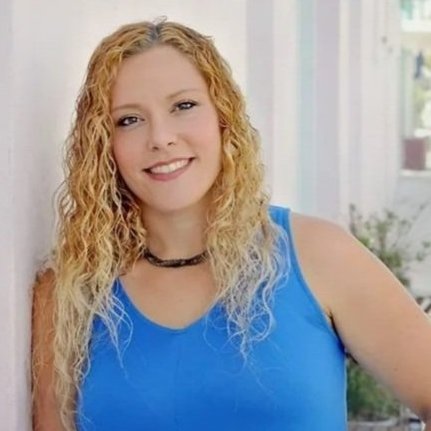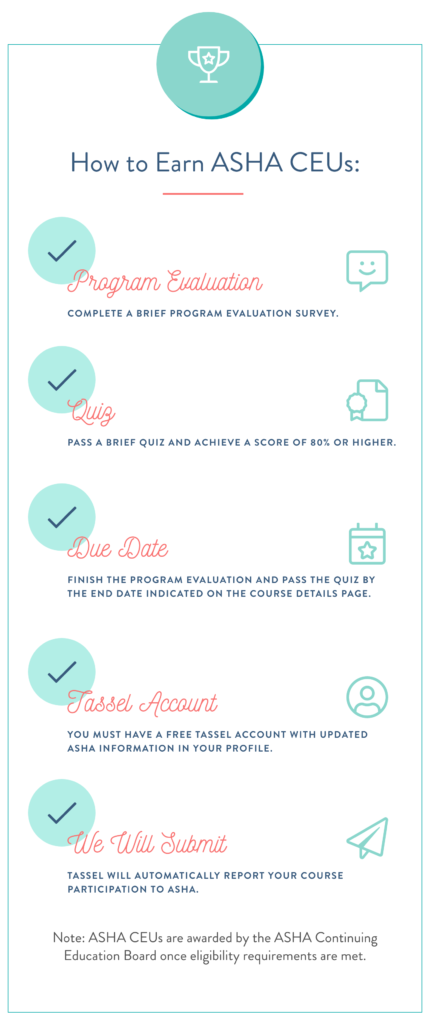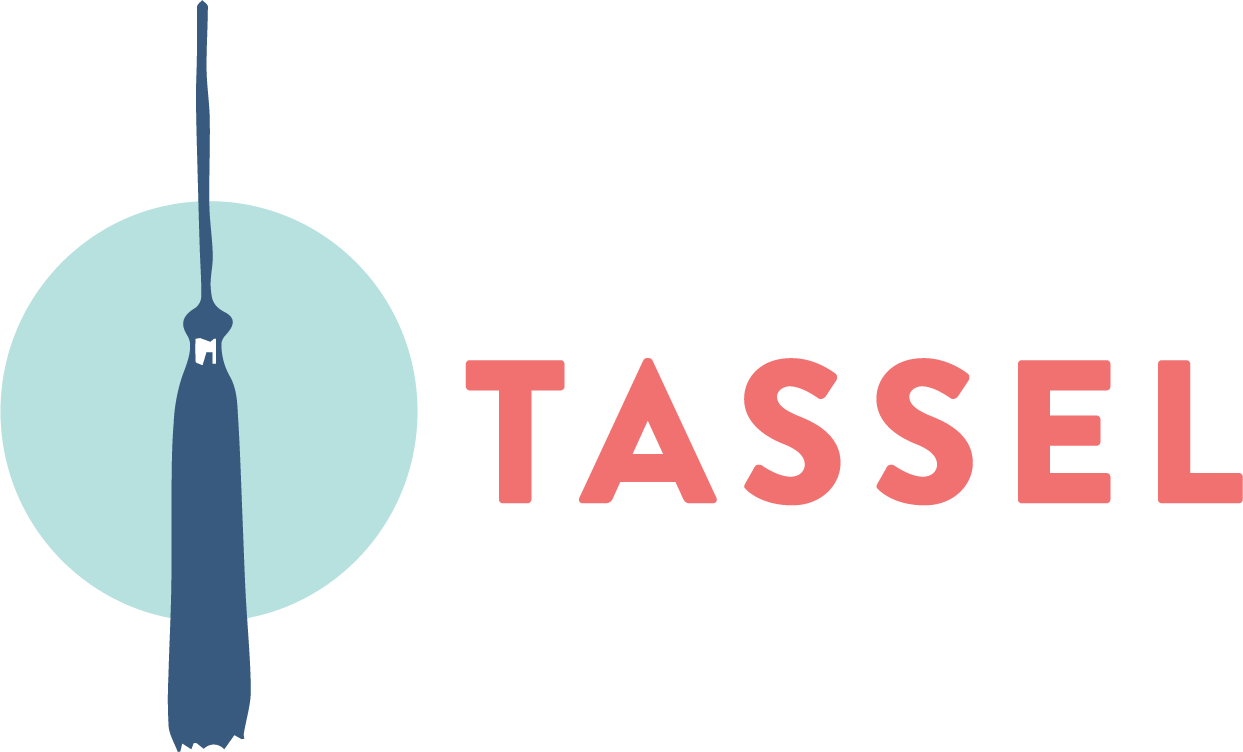Course Number: ABIO2405
When: Available March 1, 2024 – March 1, 2029
Where: Course information available under “Course Content” at the bottom of this page.
Description: In this course, we discuss crafting neurodiversity-affirming goals, exploring assessment tools for AAC candidacy, supporting families during AAC evaluations, implementing feature-matching techniques, and understanding AAC devices, debating whether public schools should provide AAC intervention and devices.
Who This Course Is Good For:
- Any ASHA member, CCC holder, or other professional who is licensed or credentialed to practice speech-language pathology (SLP) or audiology or preparing to earn ASHA CEUs
- A professional who works with pediatric clients that have limited natural speech
- A professional who works with pediatric clients that use augmentative and alternative communication (AAC) systems or may be good candidates for AAC
- A speech-language pathologist (SLP) who works in a school-based setting
- A professional who wants to learn about trauma-informed care and how to identify implement it into therapy
Who This Course Isn’t Good For:
- Any professional who is not familiar with the term AAC
- Any professional that does not currently work with any pediatric clients or plan to in the near future
- Professionals that solely provide one on one therapy in a medical setting as this course is focused on AAC implementation in a school-based setting
Presenters:

Venita Litvack, M.A, CCC-SLP (she/her)
Venita is an Assistive Technology (AT) Consultant in South Florida. She has a passion for using AAC, AT, and literacy to support individuals with complex communication needs, autism, and other disabilities. Venita has delivered poster presentations on several topics related to AAC at ASHA and co-presented several ASHA CEU-accredited courses. Venita co-authored two articles published in ASHA Leader’s online publication, as well as the Lou Knows What to Do book series published by Boys Town Press. Recently, Venita started utilizing the power of social media to empower and motivate educators across the country through the Speechie Side Up podcast, blog, Instagram account, and YouTube channel.

Kim Tice, M.S, CCC-SLP (she/her)
Kim provides intervention in language, learning, literacy, and feeding to people with autism spectrum disorder as a speech-language pathologist and certified special educator. She is also my co-author in the “Lou Knows What to Do” book series.
Kim loves helping anyone find their voice and her love of words led her to write more. Now she helps businesses clearly define their brand voice through content and strategy and is passionate in finding creative content solutions for ads, social media, websites, SEO, and more. In her spare time, she enjoys going on adventures with her children, running marathons, and taking long walks down the aisles of the Boynton Beach Target.
Disclosure Statements
Venita Litvack has the following relevant financial relationships to disclose: ownership interest in Speechie Side Up, LLC and Tassel Learning, LLC; royalties from the Lou Knows What to Do book series.
Venita Litvack has the following relevant nonfinancial relationships to disclose: member of the ASHA Special Interest Group 12.
Kim Tice has no relevant financial relationships to disclose
Kim Tice has the following relevant nonfinancial relationships to disclose: She is an affiliate of ASHA Special Interest Groups 1, Language Learning and Education; and 12, Augmentative and Alternative Communication.

Learning Outcomes
As a result of this activity, participants will:
- Identify 3 ways to write neurodiversity-affirming goals
- Identify 3 assessment tools for determining AAC candidacy
- Describe 3 ways to support families when conducting AAC evaluations
- Describe 2 ways to perform feature matching
- Describe 3 types of AAC devices and if public schools should provide AAC intervention & devices
Agenda
| 5 min | Introductions and Backgrounds |
| 5 min | Description of what makes goals neurodiversity-affirming |
| 10 min | Discussion of assessment tools for determining AAC candidacy |
| 10 min | Discussion of how to support families when conducting AAC evaluations |
| 10 min | Discussion of how to perform feature matching |
| 10 min | Question and Answer Session & Breakout Rooms |
| 5 min | Helpful resources |
| 10 min | Question and Answer session & Breakout Rooms |
| 5 min | References & closing remarks |
Complaint Policy
To file a complaint or ask general questions about the complaint filing process, please contact our support team at info@tasseltogether.com
Refund Policy
Click here to read more about our refund policy.
Requirements

Course Content

